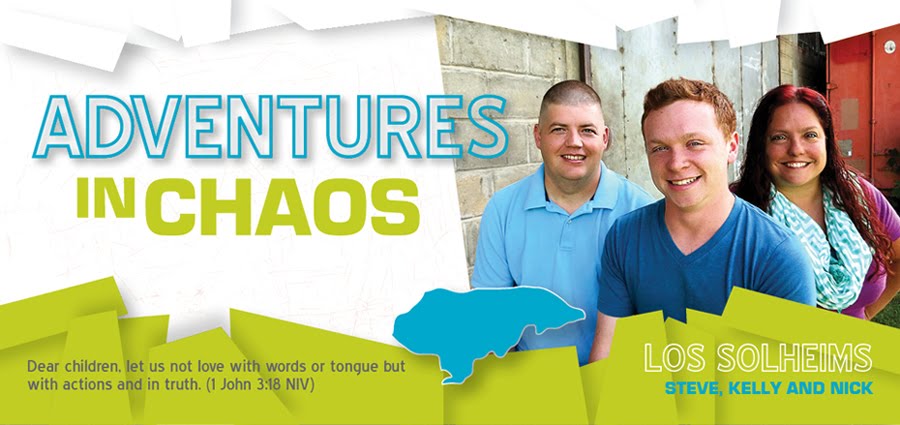I know it sounds weird, but making a real piñata has been on
my bucket list for years. Ever since I first saw the row of shops with their
brightly colored creations hanging outside in Tegucigalpa, I’ve been
fascinated. So when I got to take a field trip with two of my Spanish teachers
to a local piñataeria, I was excited. And the trip did not disappoint. I had my
best day in Honduras so far.
Appreciating Art
& Culture
Here in Honduras, piñatas are insignificant things—toys for
children. But the creativity and artistry it takes to make just one is nothing
short of inspiring. And my new friend, Blanca, makes thousands every year in
her living room. To her, it’s a job that provides for her family. To me, it is
a beautiful expression of the Latin American culture.
Resourcefulness to Admire
Blanca is one of the most successful piñata makers in
Siguatepeque and she gives much of the credit to her resourceful use of
materials. I think her methods are ingenious. Not a scrap of paper goes to
waste. At the end of the day she sweeps the floor to gather small bits of
tissue paper that have fallen. She puts the colorful mixture of scraps into
baggies and sells them as confetti to her customers. When shiny papers became expensive
and too hard to find, Blanca asked the local elementary school to save the chip
and cookie bags left after snack time. Now she washes them, turns them inside
out and cuts interesting shapes from the shiny foil inside. These shapes add
sparkle to car hubcaps and glitz to princess crowns. Her neighbors and friends
save newspaper for her and the local party store gives her damaged mylar
balloons so she can paste popular children’s characters on some of her
creations. Not only is Blanca a smart businesswoman, she’s an innovative
recycler!
Passion Unleashed
There’s one thing that creative people have in common, no
matter their culture—passion. The more Blanca talked about the process of
making a piñata, the more animated she became. She could barely contain herself
as she explained how to make a complex shape or how to choose which colors of
paper to use. She prides herself in bringing delight to the children who
receive her piñatas, but it’s clear that they bring her just as much joy.
Overworked &
Underpaid
Blanca spends 5-8 hours creating each work of art (not
including drying time). And she works like an Energizer bunny. She cuts fringes
from tissue paper at an unbelievable pace while carrying on a conversation and
not even looking at her hands. It’s absolutely mesmerizing to watch. To save
time, she uses her hand to apply the homemade paste rather than delicately
applying it with a brush, as you’d expect. She can shape wire into a Mickey
Mouse shape in a matter of minutes. In April, she’ll begin preparing for Day of
the Child celebrations to take place in September. She’ll work
seven-days-a-week making hundreds of piñatas for the holiday—no two exactly the
same. For all her effort, she’ll sell the larger, more complex piñatas for L.
200 (about $10). What a shame that a Van Gogh goes for millions while these imaginative
pieces go largely unappreciated. Crueler still is that Blanca’s art will be
destroyed in a matter of minutes! Still, there isn’t a child in the world who
wouldn’t squeal with happiness at the view of a piñata hanging at their
birthday celebration. And to Blanca and me, that’s worth far more than a Van
Gogh.
Home
I learned a lot about making a real piñata at
Blanca’s house. And it was an experience I’m grateful for. But the real reason
I’ll look back on that day as one of the best is that as we immersed our hands
in paste or transformed hanger wire into meaningful shapes, we talked—my teachers,
Blanca, her mother, her friend and me. We talked as women do. We talked about
our kids (all boys as it turns out). We talked about cooking and laundry. We
talked about struggles and blessings. And for the first time in a long time, I
wasn’t thinking about language or culture. I wasn’t concentrating on every word
I spoke so hard that my head hurt after two minutes. I wasn’t thinking about
how different I was or how I stand out. I was just laughing and talking with my
friends and making something beautiful. This day was special, not because I got
to cross something off my bucket list, but because it’s the day I realized that
I am finally at home in Honduras.




